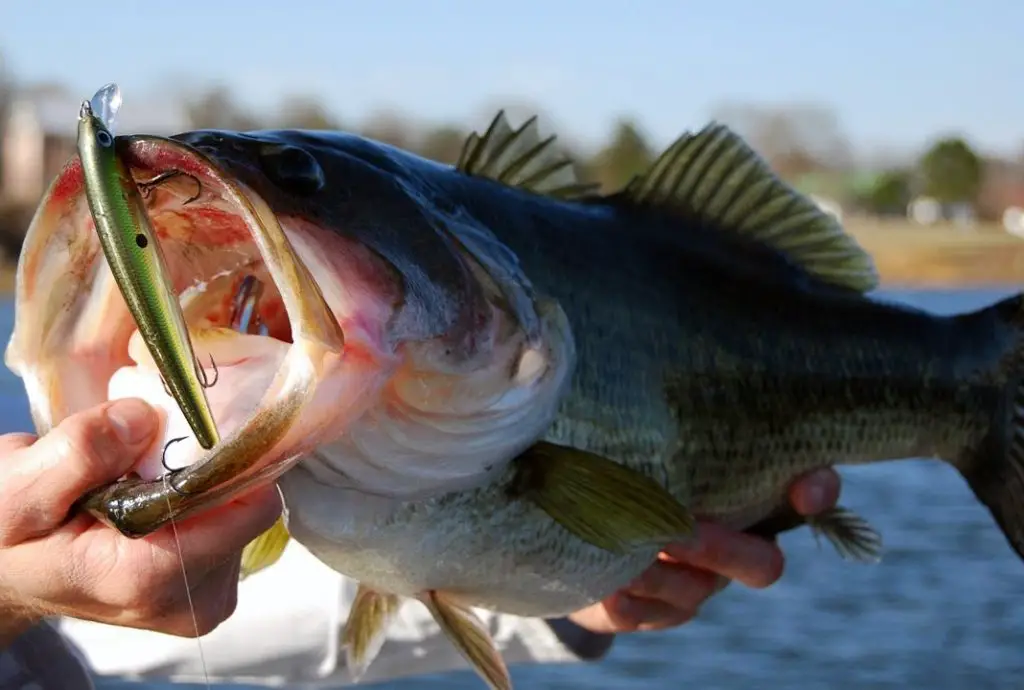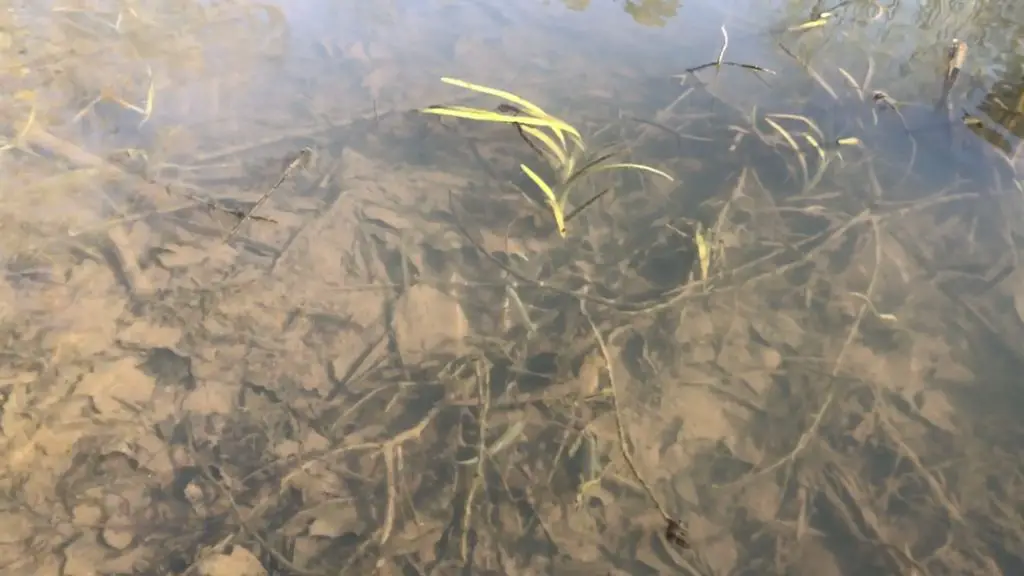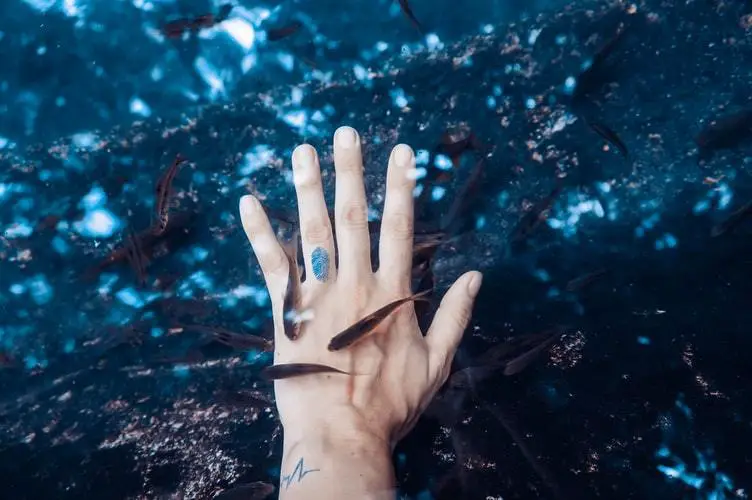Bass primarily consume smaller fish, like shad or bluegill, as well as crayfish, insects, and frogs. Their diet varies based on habitat, availability of prey, and the bass’s size. Larger bass often target bigger prey, while younger bass focus on insects and smaller aquatic organisms.
Bass are incredibly adept predators of the freshwater lakes, ponds and rivers that stretch across North America. From the southern portions of Canada all the way down into parts of Mexico, bass thrive by feeding on a range of different types of creatures from the land and the water.
Knowing what bass eat in certain environments and at different times of the year is the key to unlocking the maximum potential of bass fishing lures and certain kinds of gear. A solid understanding of what bass fish eat must be established if you want to become an expert angler.
In this article, we’ll explore some of the different things that bass eat, but also cover how their diet often changes throughout the different seasons each year.
This article is part of my Complete Guide to Bass Fishing series that you might be interested in.
Table of Contents
Types of Bass and Their Diet
In North America, there are literally dozens of different types of bass fish species and variations within a certain species that usually depend on particular geographical regions. In every case, bass are not known to be picky eaters by any stretch of the imagination. They very often devour certain prey that most anglers would never expect them to even consider eating.
Seasoned bass fishing anglers have likely witnessed bass engaging in various unusual eating habits and I can personally attest to seeing this myself. Some of the more shocking creatures I’ve watched bass eat, or try to eat include snakes, ducks, mice and even other fish that are nearly as large as the bass itself in many cases.
For most lakes or river systems, bass will target a handful of prey that many anglers consider to be their staple menu items. At certain times each year, bass will be more inclined to target specific types of prey that include shad, minnows, insects, frogs, crawfish, lizards, and many other creatures.
We’ll discuss more about what bass eat in the following sections by examining some of the finer details about these extraordinary freshwater fish species.

How Bass Fish Eat
In order to understand what bass are likely to eat at any given time of the year, it’s crucial that you know how bass eat. The method bass use to capture and devour prey is something that biologists and anglers alike will find fascinating and is incredible to watch if you’ve seen it in person.
Bass, especially the largemouth species, create a powerful suction directly in front of their face by quickly opening its mouth. The shape of a fully mature bass’ mouth and the manner in which it opens is perfectly-developed to create this type of suction and it’s one of the rare advantages these fish have when they are compared to some of the other types of predatory fish that live in the same environments.
Bass don’t actually have to catch most of the creatures they eat, but they instead only need to get close enough to open their mouths and create this suction. As their mouth opens, the smaller prey are pulled toward the bass’s mouth in the same way that some of the ocean’s most advanced predatory fish use to devour their food.
Known as ambush predators, bass will place themselves in a position of a lake or river where they can utilize cover and depth changes to their advantage when it comes to catching prey. They very often hide behind large trees, submerged brush, lily pads, vegetation and virtually anything that allows them to inch closer toward their prey before striking. In many lakes and rivers, bass will stage at certain positions where the depth change makes it easy to pick off smaller unsuspecting bait fish or other types of creatures.
What Do Bass Eat Each Season?
Understanding what bass are likely to target during each season of the year is the key to properly utilizing any type of lure or even natural baits. As the climate changes and the water temperature warms or cools to varying degrees, bass will adjust their habitat and spend their time in deep or shallow water depending on what’s more comfortable for them and where they can find food.
Spring
Widely believed to be the best time to catch bass, the spring season is a time in which bass often come out of their cold-weather slumber and are reinvigorated by the warming water temperatures. As life everywhere seems to bustle, bass will begin moving from their deep-water abodes, gradually migrating toward shallow sections of any body of water where they search for shad or any type of bait fish they can find.
Small minnows, shad and other bait fish usually become more comfortable venturing into deeper water during the winter as bass and other large predatory fish are usually dozens of feet below the surface. Once bass begin their return into these shallow sections that are less than roughly 10 feet deep, they will begin to ambush these bait fish and other creatures like crawfish that are found in this section of the water column.
This targeting of shad, crawfish and virtually any type of small fish during the early spring makes lures like spinnerbaits, lipless crankbaits, jerkbaits and others extremely valuable. Once the spawn begins, bass might eat anything that comes in their path until they are locked on their bed, guarding their eggs.
They won’t eat anything while they are guarding their eggs, but large females and males will bite anything they feel is a threat to their young and move it away from their bed before dropping it. During this time, you can catch bass on virtually any type of lure as long as it’s able to reach their bed. After the spawn, bass won’t eat for a few days or possibly a week before they resume their normal feeding habits for the summer.

Summer
Bass will eat almost anything that comes their way during the warm summer months. They will venture farther into the shallows to search for various insects, flies, frogs and a wide range of bait fish and other creatures that they can make a meal of. It’s at this time that bass will look toward the surface of their habitat instead of mostly searching for food that’s already swimming and lives in the water around them.
Summer bass fishing is a time when topwater lures rule the roost and learning when and how to use them is not only productive, but incredibly fun. There’s nothing quite like working a topwater popper, frog, buzzbait or other lure across the surface only to have a fish explode out of the water to bite it. They will also eat a wide range of lures that resemble small bait fish at various sections of the water column, which makes soft plastics another highly-productive type of lure to use during the summer.
Toward the end of summer, across much of the United States, bass will begin to feed primarily at night in order to avoid the scorching heat. During the daylight hours, they can sometimes be caught in deep water that’s around 15 to 20 feet in most lakes, but you shouldn’t expect them to venture into water less than 10 feet until the lowlight hours of dawn or dusk and throughout the night.
When it comes to night bass fishing, bass are willing to eat a wide variety of different types of lures. Night fishing for bass is very productive and fun as you’re able to avoid the heat and enjoy catching more fish, especially trophy-size bass.

Fall/Winter
During the fall season, the water once again shifts and begins to cool as the outside temperature drops. During the middle of the fall, bass will once again become much more active as the temperate water allows them to feel more like feeding and searching for prey.
During the fall, the prime target for any bass will be shad, minnows and any variation of small bait fish. In many large lakes and reservoirs, shad can be found in large schools and bass will stay in certain parts of their home lake or river where they are able to take advantage of the weaker or slower members of these schools of shad and other small fish.
You might still catch some fish on topwater well into the fall season, but once the winter sets in, bass will exclusively feed on shad, minnows, bait fish or crawfish until the spring once again dawns. Deep-diving crankbaits, spinnerbaits, lipless crankbaits and a variety of soft plastic rigs are the key to catching bass in the frigid winter months.

Conclusion
There is much more that we could discuss regarding each individual season and what bass eat at certain times, but the points made in this article should serve as a good starting-point for any angler to know what types of baits or lures to use at various times. By understanding the different types of prey that are unique to your area, you can further utilize your knowledge of what bass eat to catch these fish in greater size and quantity.
